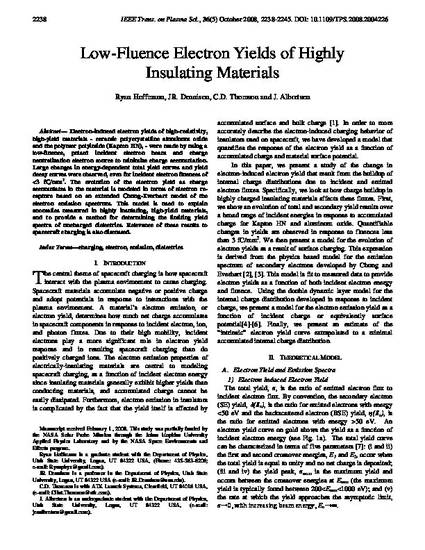
Article
Low-fluence Electron Yields of Highly Insulating Materials
IEEE Transaction on Plasma Science
(2008)
Abstract
Electron-induced electron yields of high-resistivity high-yield materials - ceramic polycrystalline aluminum oxide and polymer polyimide (Kapton HN) - were made by using a low-fluence pulsed incident electron beam and charge neutralization electron source to minimize charge accumulation. Large changes in the energy-dependent total yield curves and yield decay curves were observed, even for incident electron fluences of < 3 fC/mm2. The evolution of the electron yield as charge accumulates in the material is modeled in terms of electron recapture based on an extended Chung-Everhart model of the electron emission spectrum. This model is used to explain the anomalies measured in highly insulating high-yield materials and to provide a method for determining the limiting yield spectra of uncharged dielectrics. The relevance of these results to spacecraft charging is also discussed.
Keywords
- aerospace materials,
- aluminium compounds,
- ceramics,
- electron emission,
- insulating materials,
- polymers,
- spacecraft charging
Disciplines
Publication Date
October 1, 2008
Publisher Statement
http://ieeexplore.ieee.org/xpls/abs_all.jsp?arnumber=4660313
Published by IEEE in IEEE Transaction on Plasma Science. Publisher PDF is available for download through the link above.
Citation Information
Ryan Hoffmann, JR Dennison Clint D. Thomson and Jennifer Albresten, “Low-fluence Electron Yields of Highly Insulating
Materials” IEEE Transaction on Plasma Science, 36(5) October 2008, 2238-2245
